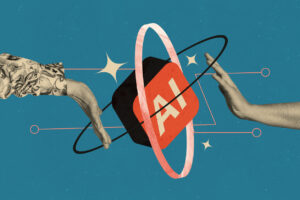Training the AI muscle: PwC’s approach to bridging AI theory and everyday use
How the firm is closing the gap.

There can be a gap between AI theory and practice in communications. To help reduce this gap and build agile teams, it’s important to drive upskilling and continuous learning on the latest tools and emerging technologies.
PwC avoided these pitfalls early in its AI journey, closing the gap by empowering its employees to lead from within through a “train the trainer approach.”
Championing the champions
While introducing innovative technology is important, it is only the first step. Daryl Drabinsky, who leads AI strategy and implementation efforts for PwC’s Communications & Corporate Affairs team, believes that success depends on helping employees internalize and apply these tools in their everyday work. “It’s about building that muscle and exercising it,” she said. You can teach someone the theory, but until they practice, it does not really stick.”
To put AI theory into practice, PwC’s “train the trainer” approach designates PwC’s AI Champions in each line of service who coach their teams how to use the tools effectively. Drabinsky leads a team of 20 volunteer ‘champions’ within the Communications & Corporate Affairs team who advocate for AI and provide personalized, hands-on support. This tailored approach empowers PwC to meet specific needs across teams, helping AI become a practical tool for enhancing productivity.
Leading AI adoption from within
Like with any new tool, AI adoption involves more than just training — it requires cultivating comfort and familiarity so employees can integrate the tool effectively into their work. While PwC’s initial training programs introduced employees to AI tools, the firm quickly recognized that knowing how to use a tool is not enough to make it a practical part of daily workflows.
“It’s not just introducing tools; it’s changing how we all think and work. And that is a heavy lift,” said Drabinsky. PwC’s upskilling journey began with firm-wide sessions on introducing AI and Responsible AI usage, combining lectures with gamified elements like trivia sessions that rewarded employees for high scores, making learning interactive and engaging.
However, PwC realized that employees needed more than just training — they needed to apply the tools in real-world scenarios. At a team meeting in April, the Communications & Corporate Affairs leadership team organized a “relay” that required attendees to use AI tools in real time to complete tasks. It was then replicated with the entire Communications & Corporate Affairs all hands meeting in August.
This hands-on approach allowed the Communications & Corporate Affairs team to move beyond theory and gain practical experience together, helping to solidify their understanding and integral use of AI’s capabilities.
“It pushes people to use the tools and make the jump,” Drabinsky said.
To keep the momentum going, PwC also introduced weekly challenges where employees experimented and learned effective prompting using AI tools. This constant engagement has turned AI from a theoretical tool into a practical one, AI has become integral to employees’ day-to-day work.
Measuring the impact of AI
Because the technology is still relatively new, a key challenge in AI adoption is measuring its impact across various parts of the organization.
“What does success look like for these tools depending on what line of service you’re in?” Drabinsky wonders.
As PwC continues to introduce AI tools across the firm, they are exploring how to quantify the benefits of these tools, from time saved to productivity gains.
“How do you measure ROI?” asks Drabinsky.
PwC has identified three key areas where AI can make the most impact: monitoring, innovation and growth acceleration, and efficiency and productivity. However, the firm acknowledges that these metrics can vary depending on the department or use case. “Right now, we’re in the growth stage,” Drabinsky says. “There are new tools coming out every day.”
This rapid pace of innovation, combined with the need to measure AI’s effectiveness against a time-tested baseline, means that PwC continues to refine its approach to understanding and implementing the value of AI.
Scaling AI usage across the firm with change communications
PwC is accelerating the adoption of AI with ChatGPT Enterprise, within the firm and with clients. While only a few AI Champions can access the ChatGPT Enterprise platform so far, PwC is taking a thoughtful approach to scaling the technology across the organization. “You want everyone to have access, but you want to do so in a responsible and strategic way,” explained Drabinsky.
As part of this rollout, PwC is focusing on developing use cases and training programs tailored to different teams. “It’s like any other communications change plan,” Drabinsky said. “How are we encouraging adoption? What custom learning, training, or webinars do we have?” By taking a structured approach to scale AI, PwC’s upskilling commitment to employees so they are not only able to use AI tools but are also motivated to integrate them into their daily workflows.
From internal use to external advice
Drabinsky’s advice to other communications leaders? Do not just invest in AI but develop a business case that supports the business — and elevates the value of the comms function in the process.
“AI can be a powerful tool when it’s directly aligned with business needs,” she said. Drabinsky recommends that the Communications team collaborate with the business to understand key challenges and tailor AI support accordingly.
“By aligning AI training and tools with the organization’s goals, our Communications team can emphasize that AI not only enhances daily workflows, but also drives real business value, helping push strategic objectives forward,” she added.
Drabinsky will showcase PwC’s work at Ragan’s AI Horizons Conference in Miami Beach next February. Register now.
PwC is a member of Ragan’s Communications Leadership Council. Learn more about joining here.
Justin Joffe is the editorial director and editor-in-chief at Ragan Communications. Follow him on LinkedIn.







